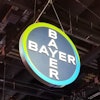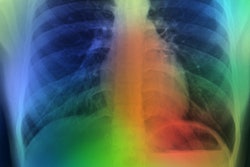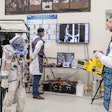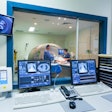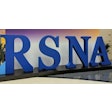
Medical imaging may be turning to teleradiology to adapt to the COVID-19 pandemic, with hospitals allowing radiologists to interpret medical images from home. But making the transition to remote reading from home is more complicated than simply flipping a switch.
Getting teleradiology systems up to speed for the "new normal" of more remote reading in the COVID-19 era involves providing read-at-home radiologists with the necessary tools -- software and hardware, virtual private network (VPN) technology, peripherals, proper cable connections, and the like -- so that they can handle workflow as quickly and efficiently as if they were physically located at their hospital or private practice.
Meeting requirements
First off, reading workstations to be used at home must meet all the same requirements of PACS workstations being used at the healthcare enterprise, according to an article published online in the American Journal of Roentgenology (AJR) on June 30, 2020. This means that the home teleradiology workstation's memory, central processing unit (CPU), and video card specifications must have processing power similar to that of hospital workstations.
When Texas Children's Hospital and Baylor College of Medicine began moving their radiologists to home reading at the start of the COVID-19 pandemic, they made sure that home computers were running software identical to what was used at in-house PACS workstations, according to Dr. Marla Sammer, a radiologist at Texas Children's Hospital and lead author on the AJR paper.
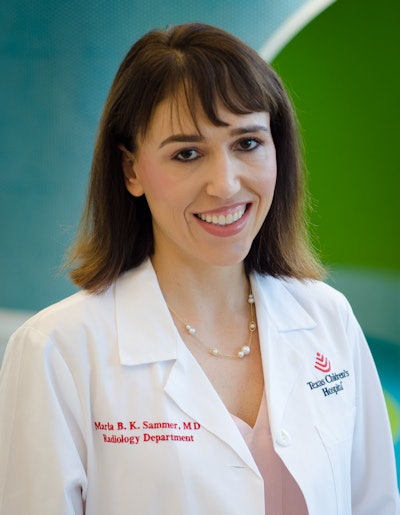 Dr. Marla Sammer.
Dr. Marla Sammer.Off-the-shelf home teleradiology workstations were rush-ordered as radiologists urged hospital and vendor management to speed the process. Through this effort, the time from ordering to receiving the workstations from the manufacturer -- Dell -- was reduced from six weeks to 12 days, the authors stated.
"Monitors were chosen that, together with calibration software, are approved by the U.S. Food and Drug Administration for nonmammographic diagnostic imaging. Accessing the hospital resources from offsite locations depended on two-factor authentication and a robust VPN connection provided by the hospital to ensure security, encryption, and HIPAA compliance," the authors explained.
The typical configuration for radiologists from Texas Children's Hospital working at home was the same as the department's in-house PACS workstation: CPU, microphone, and three monitors.
"We connect over software VPN. Otherwise, all workstations have the same set of tools and programs that we have available in-house. The majority of our advanced postprocessing software is available as enterprise licenses, so we are also able to do postprocessing from home and have our 3D lab technologists work safely from home," explained Dr. Andrew Sher, radiology chief of informatics at Texas Children's Hospital, in an interview.
 Dr. Andrew Sher.
Dr. Andrew Sher.Every radiologist in the department has a home workstation, Sher said. Remote radiologists have access to the full set of image interpretation tools available to the in-house radiologists.
"The image between the two systems is identical," he noted.
In the AJR article, Sammer et al reported that some radiologists received training from the hospital's information services (IS) group, as well as login and VPN access, and determined the functionality of their home PACS workstations at the hospital. They installed the workstations on their own, a process that took approximately two hours. Instructions to supplement training were developed to ensure a straightforward setup.
Although a wired Ethernet cable connection was preferred, a separately purchased USB 3.0 Wi-Fi adapter allowed use of home PACS workstations at sufficient network speeds without a wired connection, the authors said.
But there are concerns about the workstations' continued long-range functionality, specifically the monitors, for diagnostic work. Undertaking recommended routine periodic monitor calibration of home diagnostic displays could also be challenging.
Another challenge during the rollout was getting security clearance for virtual private network (VPN) usage, as all of Texas Children's was shifting its workforce offsite, and there was a backlog of requests, according to Sher.
"There were also the expected technical challenges you experience with any type of rollout, with regard to people adjusting to change. Finally, setting up the stations at people's homes required hooking up to people's home ISPs, and assuring fast enough speeds," Sher said.
In terms of lessons learned from the experience, Sher emphasized that communication is key.
"A process that typically takes two to three months was accomplished in 14 days," he said. "The rapid rollout would not have been possible without communication between key players in radiology and IS. We were able to cut through a lot of bureaucracy by working together."
Apart from the technical challenges, the main challenge in moving to home teleradiology has involved mitigating the disconnectedness inherent to physical distancing, Sammer said in an interview with AuntMinnie.com. For instance, the department has set up informal group texts for divisions within the department and frequent videoconferences, she said.
Sammer added that it is the department's vision for radiologists to primarily work physically in the hospital and clinics. However, this will also be balanced with the desire and need to work from home.
She noted that the department has not exactly determined how much of the remote working configuration will be retained after the pandemic is over. But the department plans to have at least some staffing from offsite on a daily basis, and it intends to outfit each diagnostic radiologist with a home workstation, she pointed out.
Infrastructure in place
When COVID-19 hit, a teleradiology infrastructure that supported working at home was already in place going back a number of years at California's Sutter Medical Group, a radiology practice serving the 24-hospital Sutter system, explained Dr. Jason Wiesner, a practicing radiologist in the group and the medical director of Sutter Health's diagnostic imaging service line and director of imaging informatics.
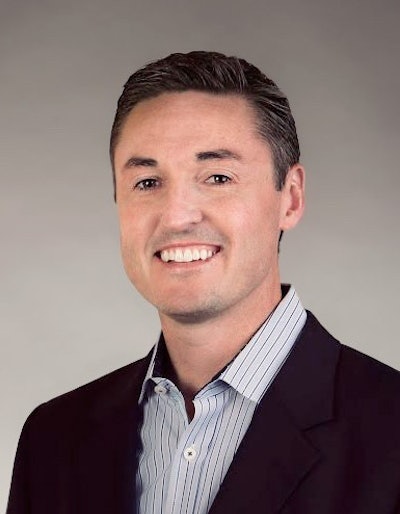 Dr. Jason Wiesner.
Dr. Jason Wiesner.Sutter Medical Group started an in-house overnight teleradiology service some years ago and in 2016 eliminated its outsourced teleradiology provider, providing 24 x 7 final reads for almost five years now. Initially, due to software and hardware constraints, the group had 19 radiologists and 19 workstations for its overnight teleradiology shifts.
"When we converted to our current deconstructed PACS platform, we were able to leverage the fast streaming images and server-side rendering technology on cheaper computers, so we were able to expand our remote reading footprint significantly," Wiesner said.
Wiesner added that Sutter generally provided its remote radiologists with similar workstation towers, peripherals, dictation microphones, and keyboards, and it also offered some cabling support. The remote radiologists have access to a full range of image interpretation tools, similar to the in-house radiologists, according to Wiesner. Each also received a standing desk from Sutter, as well as an approved ergonomic chair.
For security, radiologists have to use a VPN to log into the Sutter network. The workstation towers have encryption technology. The at-home teleradiologists must report calibration numbers annually. Connectivity has been seamless, Wiesner added.
It appears that Sutter Health's radiologists have adapted well to remote work. Wiesner noted that two big drivers of teleradiology are work-life flexibility and gains in productivity.
"When they have the ability to work a shift from home, most of our radiologists are relieved to be able to avoid the commute to work," he said.
Teleradiology capability also has given Sutter Health some staffing flexibility. The practice instituted "flex shifts," which give radiologists who are on vacation or who are taking personal days off an option to volunteer for extra work while they are off. If there is a surge in volume, they would be contacted and asked if they wanted to work for a few hours from home.
In a related move, Sutter Health put in place specific sanitizing and social distancing practices in its waiting rooms, which have extended the time needed for imaging each patient by about 10 minutes. Now, the provider is looking for ways to optimize those procedures to improve its capacity by imaging modality.
Matching setups
At Valley Radiology and Associates in Harlingen, TX, the typical setup for most radiologists is similar to the one in-house at the hospital or clinic. It includes three to four monitors, a tower computer, and peripherals such as microphone, keyboard, and mouse.
Additionally, depending on the number of sites covered and whether enterprise systems are shared, the use of display switches and additional desktop computers can be utilized. This necessitates a larger footprint desk and home office space, with the practice covering setup costs, according to Dr. Avez Ali Rizvi, a radiologist at Valley Radiology.
 Dr. Avez Ali Rizvi.
Dr. Avez Ali Rizvi."Our practice also covers the cost of a business network line and uses VPN to connect to hospital networks. All our radiologists have a similar setup with minor variations in hardware configuration," Rizvi added in an interview.
The remote radiologists have access to the full set of image interpretation tools available to the in-house radiologists. Rizvi explained that his practice did not need to purchase any additional equipment to support its teleradiology needs. Most private practices routinely perform some teleradiology from home, so the same equipment and setup are utilized currently during the pandemic, he said.
"We have an imaging informaticist-administrator who determines the adequacy of home office space and ambient lighting conditions and makes recommendations per [American College of Radiology and Society for Imaging Informatics in Medicine] guidelines if the environment needs to be adjusted. We have not run into any concerns to date," Rizvi stated.
Security is ensured by the use of high-encryption passwords to the network. A VPN also is used, and the network is monitored on a routine basis. The administrator keeps track of updates, security patches, and upgrades by working closely with the practice's hospital IT departments, according to Rizvi.
"There have been no real challenges with the setups per se, but there are occasional issues with performance," he said. "Load times on VPN can vary based on network architecture and data center locations. This is typically not a significant concern."
Rizvi noted that Valley Radiology's radiologists have adapted well to remote work.
"The consensus in our practice is that remote work is both necessary and useful, not only during this pandemic, but also going forward. We have made real adjustments to our practice schedule because of this realization," he stated.
Need more integration
But while Rizvi believed that radiology as a field has made tremendous technological strides in allowing radiologists to read both remotely and in-house in a near-identical fashion, he said that collaboration with other clinicians and healthcare staff members has not evolved in a similar way.
Systems for remote collaboration that are as seamless as the experience of collaboration "at the workstation" in-house are neither easily available nor well-integrated, he explained. Typical consumer conference applications are not optimized for efficient collaboration with radiologists reading remotely, he added.
Generally, when implementing more remote radiology shifts, there needs to be open communication between radiology, clinicians, and administrators, Rizvi said.
"There needs to be an honest conversation between radiologists within a practice as well as with fellow clinical colleagues and the hospital administration," Rizvi concluded. "A happy medium that allows all parties to benefit from the setup must be reached. In many instances, including in our practice, this is possible."

